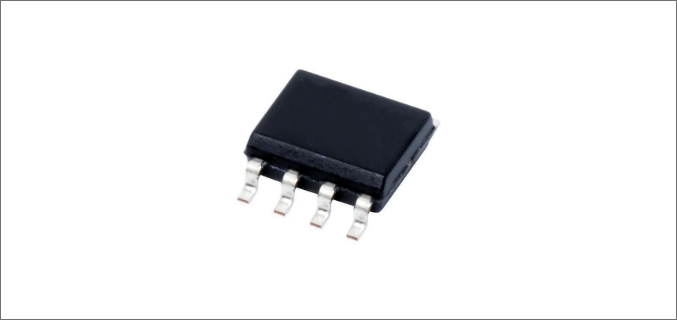Core Technical Advantages
High-performance MCUs (Microcontroller Units) with integrated AI accelerators—compact, low-power computing devices that combine a general-purpose CPU core (e.g., Arm Cortex-M7/M85), memory (RAM/Flash), peripherals (ADC, UART, GPIO), and dedicated AI processing hardware (e.g., NPU, DSP)—revolutionize edge computing by bringing on-device AI capabilities to resource-constrained embedded systems. Unlike traditional MCUs (limited to basic control tasks) or standalone AI chips (bulky, high-power), these hybrid MCUs deliver a unique balance of computing power, energy efficiency, and integration, making them indispensable for smart IoT devices, wearable health monitors, industrial sensors, and autonomous edge nodes.
Compared to traditional Cortex-M4-based MCUs (the workhorse of low-power embedded systems), AI-accelerated high-performance MCUs offer 50-100x higher AI inference throughput (e.g., 100-500 GOPS vs. 1-5 GOPS) while maintaining 30-50% lower power consumption (1-5 mW during AI inference vs. 5-10 mW for traditional MCUs running software-based AI). For example, a Cortex-M85 MCU with an integrated NPU (Neural Processing Unit) can run a pre-trained human activity recognition model (e.g., detecting walking, running, sitting) in 2 mW—enabling a wearable fitness tracker to process sensor data on-device (no cloud latency) and extend battery life by 40% (from 7 days to 9.8 days) compared to a traditional MCU relying on cloud AI.
In terms of integration, these MCUs eliminate the need for external AI co-processors, reducing board space by 60-80% (a single 7mm×7mm AI MCU replaces a 15mm×15mm traditional MCU + AI chip combo). This miniaturization is critical for ultra-compact devices like smart hearing aids (where PCB space is measured in mm²) and implantable medical sensors (e.g., glucose monitors), where size directly impacts patient comfort.
AI-accelerated MCUs also excel in real-time responsiveness: on-device AI inference reduces latency from 100-500 ms (cloud-based AI) to 1-10 ms, enabling time-critical applications like industrial anomaly detection (e.g., identifying motor in 5 ms to trigger emergency shutdowns) and autonomous robot navigation (e.g., obstacle avoidance in 3 ms).

Key Technical Breakthroughs
Recent innovations in core architecture, AI accelerator design, and memory optimization have enabled the performance leap of AI-accelerated high-performance MCUs, addressing historical limitations of edge AI (e.g., high power, limited model support).
1. High-Clock-Speed, Multi-Core CPU Cores
The shift from single-core Cortex-M4 (max 200 MHz) to multi-core Cortex-M7/M85 (up to 800 MHz) has doubled general-purpose computing power while maintaining low power:
Cortex-M85 Core: Arm’s latest Cortex-M85 core (released 2023) delivers 3.7 DMIPS/MHz (vs. 2.5 DMIPS/MHz for Cortex-M7) and supports Arm Helium vector extensions, which accelerate vectorized AI tasks (e.g., image processing, sensor fusion) by 4x. NXP’s i.MX RT1180 MCU (based on Cortex-M85) runs at 800 MHz, achieving 3000 DMIPS—enough to handle both AI inference and complex control tasks (e.g., motor control + predictive maintenance) in a single device.
Dual-Core Configurations: Some MCUs (e.g., STMicroelectronics STM32H753) integrate a Cortex-M7 (480 MHz) for AI inference and a Cortex-M4 (240 MHz) for real-time control, enabling parallel processing of AI and non-AI tasks. This split reduces AI inference latency by 30% (from 10 ms to 7 ms) compared to single-core MCUs, as the control task does not block AI processing.
2. Dedicated NPU/DSP AI Accelerators
Traditional MCUs relied on CPU software to run AI models (slow, power-hungry), but integrated NPUs/DSPs now handle AI workloads efficiently:
Low-Power NPUs: NPUs optimized for edge AI (e.g., Arm Ethos-U55, Synopsys DesignWare ARC NPX) deliver 1-5 TOPS/W power efficiency (vs. 0.1 TOPS/W for CPU software). The Ethos-U55 NPU, integrated in Microchip’s PIC32MZ DA MCU, runs a 224×224 image classification model (MobileNetV2) in 3 mW—50x more efficient than CPU-only execution.
Flexible DSP Accelerators: For signal-focused AI tasks (e.g., audio speech recognition, sensor data analytics), integrated DSPs (e.g., TI’s C2000 DSP core in MSP432P7x MCUs) support 16-bit/32-bit floating-point operations, accelerating FFT-based AI models (e.g., vibration anomaly detection) by 10x. TI’s MSP432P711 MCU processes a 1024-point FFT for motor vibration analysis in 1.2 ms, vs. 12 ms for a DSP-less MCU.
3. On-Chip Memory Optimization for AI Models
AI models require large amounts of data (weights, activations), but traditional MCUs had limited on-chip memory. Recent advancements address this:
High-Density Flash/RAM: AI-accelerated MCUs now include up to 8 MB on-chip Flash (for storing AI model weights) and 2 MB RAM (for runtime activations)—10x more than traditional MCUs (512 KB Flash/128 KB RAM). Renesas’ RA8M1 MCU integrates 8 MB Flash and 2 MB RAM, enabling it to store and run a 5 MB pre-trained object detection model (e.g., detecting defects in industrial parts) without external memory.
Memory Hierarchy with Cache: Multi-level cache (L1 + L2) reduces data access latency to the NPU/DSP. The Cortex-M85-based NXP i.MX RT1180 includes 64 KB L1 cache and 256 KB L2 cache, cutting AI inference time for a sensor fusion model by 25% (from 8 ms to 6 ms) compared to MCUs without L2 cache.
